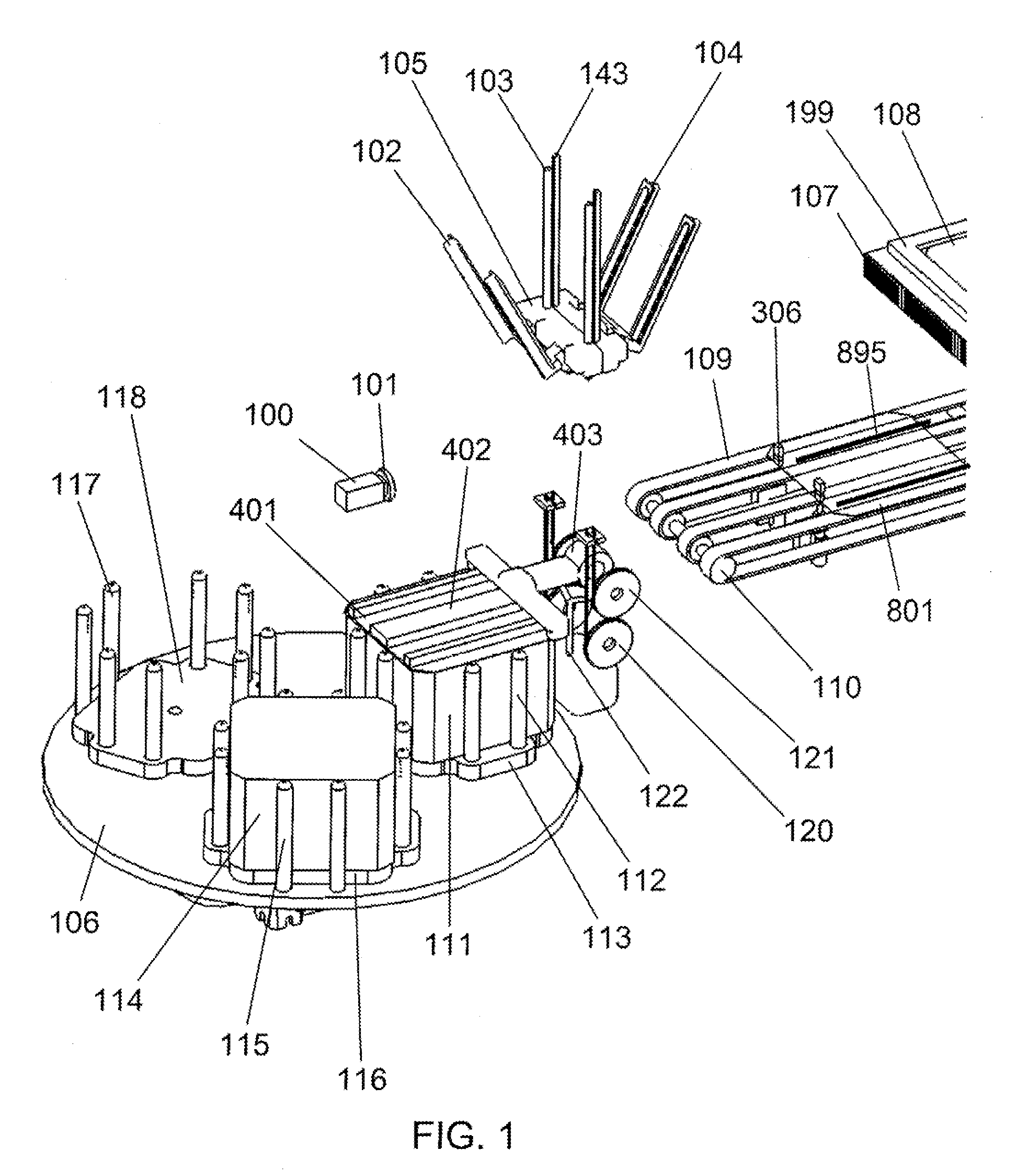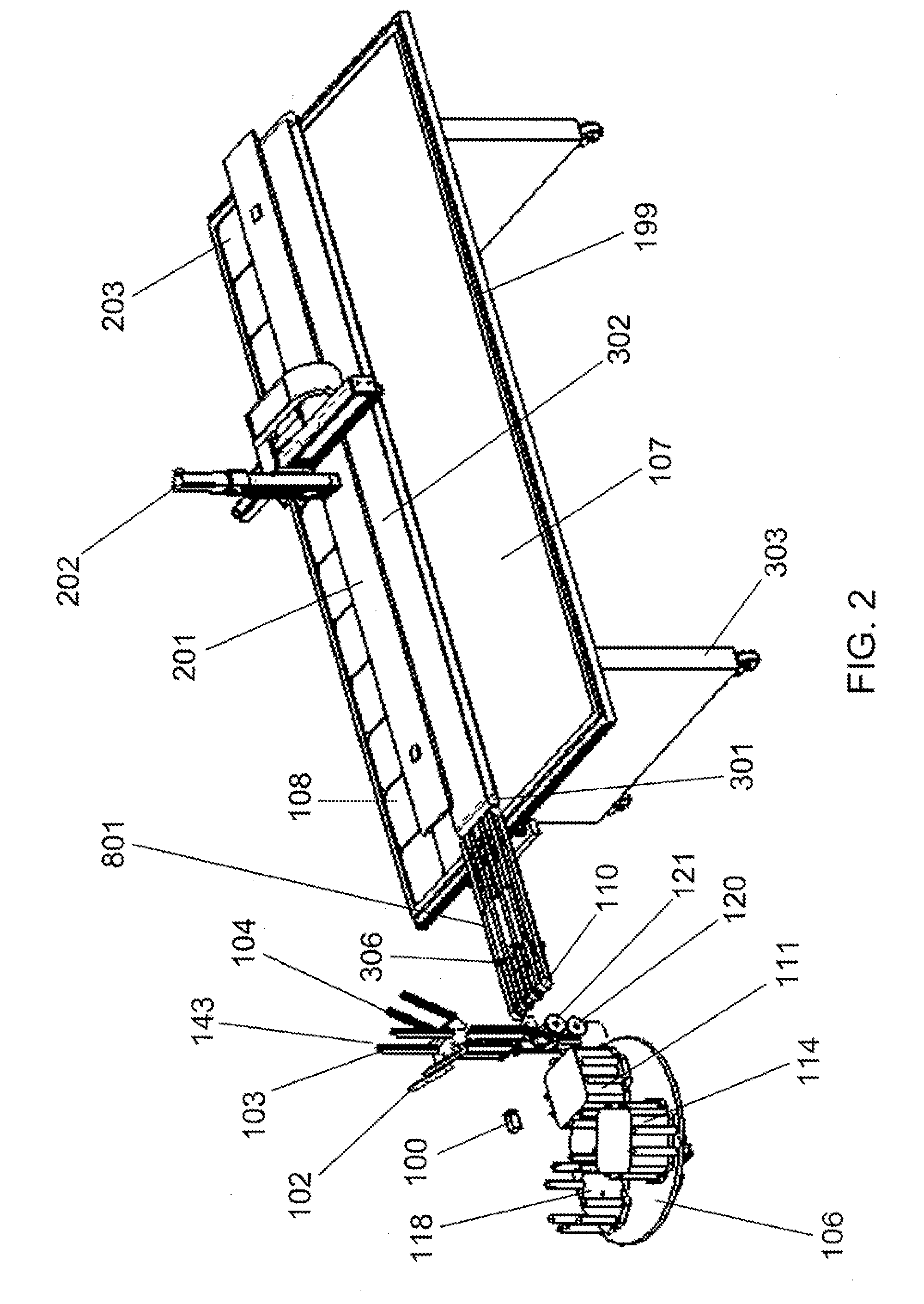System for simultaneous tabbing and stringing of solar cells
a solar cell and tabbing technology, applied in the field of solar cell array manufacturing, can solve the problems of poor yield and reliability of solder joints, inability to tightly pack pv cells, and large labor and capital equipment required for assembly of solder joints, so as to improve the adhesion of ribbons and reduce relative thermal expansion. , the effect of improving the quality of the soldering
- Summary
- Abstract
- Description
- Claims
- Application Information
AI Technical Summary
Benefits of technology
Problems solved by technology
Method used
Image
Examples
Embodiment Construction
[0034]Described herein is a system configured for the combined tabbing and stringing of photovoltaic solar cells (PV cells or wafers) together, and the subsequent assembly of strings of PV cells into a solar cell array. The system includes the following main subsystems:[0035]1) Wafer bin turntable—this turntable contains multiple (e.g., three) bins: for example, one bin containing wafers being individually loaded into the tabbing subsystem, a second bin being loaded with wafers, and a third bin for rejected wafers. In other embodiments, more than three bins may be used. For example, alternating pairs of wafer containing bins may be used to provide multiple operational positions, as will be apparent from the discussion below. This may be especially useful where tabbing and stringing operations are performed by pairs of assemblies (e.g., two such assemblies, four such assemblies, etc.).[0036]2) Vacuum arm wafer transfer subsystem—transfers wafers between the bins, tabbing subsystem an...
PUM
| Property | Measurement | Unit |
|---|---|---|
| angle | aaaaa | aaaaa |
| distance | aaaaa | aaaaa |
| clamping force | aaaaa | aaaaa |
Abstract
Description
Claims
Application Information
 Login to View More
Login to View More - R&D
- Intellectual Property
- Life Sciences
- Materials
- Tech Scout
- Unparalleled Data Quality
- Higher Quality Content
- 60% Fewer Hallucinations
Browse by: Latest US Patents, China's latest patents, Technical Efficacy Thesaurus, Application Domain, Technology Topic, Popular Technical Reports.
© 2025 PatSnap. All rights reserved.Legal|Privacy policy|Modern Slavery Act Transparency Statement|Sitemap|About US| Contact US: help@patsnap.com



